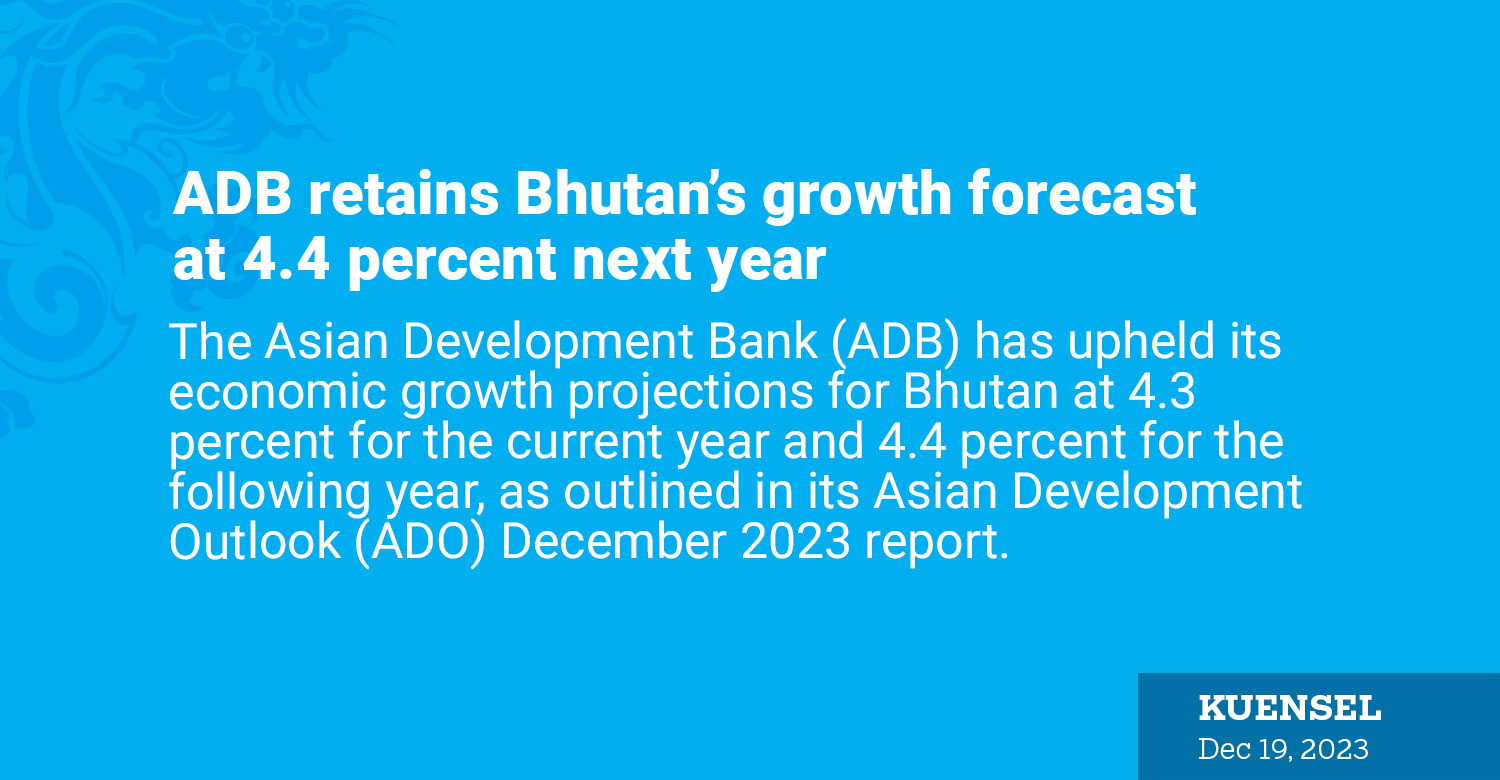Thukten Zangpo
The Asian Development Bank (ADB) has upheld its economic growth projections for Bhutan at 4.3 percent for the current year and 4.4 percent for the following year, as outlined in its Asian Development Outlook (ADO) December 2023 report.
The Bank attributes these positive forecasts to the recovery in the tourism industry and the upcoming commissioning of the Nikachhu power plant, expected to generate 491 million units of electricity annually.
The anticipated opening of the Nikachhu power plant next month and the initiation of the Punatsangchhu-II plant by the end of the coming year contribute significantly to Bhutan’s economic outlook.
The ADB underscores that any delays in these projects could impede growth, but given their advanced stages of completion, no significant setbacks are anticipated.
The tourism sector is also on a path to recovery, with a notable influx of 104,304 tourists between September 23 of the previous year and October 29 of the current year.
Between January and October 29 of the current year, 83,407 tourists visited the country, aligning with the Department of Tourism’s projection of 98,000 tourists for the entire year.
Despite maintaining a growth rate of 4.3 percent for the current year and projecting 4.4 percent for the next year, the ADB adjusted its growth expectations from the previous ADO update in April of 4.6 percent this year and 4.2 percent next year.
This year’s growth was slightly downgraded due to adverse weather conditions, particularly erratic monsoon rains impacting crop production and a shortfall in hydropower production affecting industrial output.
The decline in hydropower generation, amounting to 9,563.7 million units between January and October of the current year, compared to 9,674.2 million units in the previous year, contributed to the downward revision.
Additionally, the agriculture sector’s growth was revised down from 3.2 percent to 2.8 percent in the September update.
Challenges in the construction sector were evident with a 0.2 percentage point reduction in growth, driven by the suspension of credit for commercial housing and hotel projects in June, aimed at addressing nonperforming loans and conserving foreign exchange reserves.
Despite these challenges, the manufacturing sector is projected to grow by 3.3 percent, while the mining sector is expected to contract by 1.5 percent.
The service sector, particularly tourism, is anticipated to improve, with a 0.3 percentage point growth driven by an expected increase in tourist arrivals.
The government’s implementation of a new incentive on September 1, halving the prevailing daily sustainable fee for tourists, is likely to further boost tourism, which has already seen a steady increase from 22 percent of pre-pandemic levels in the first quarter to 46 percent in April of the current year.


